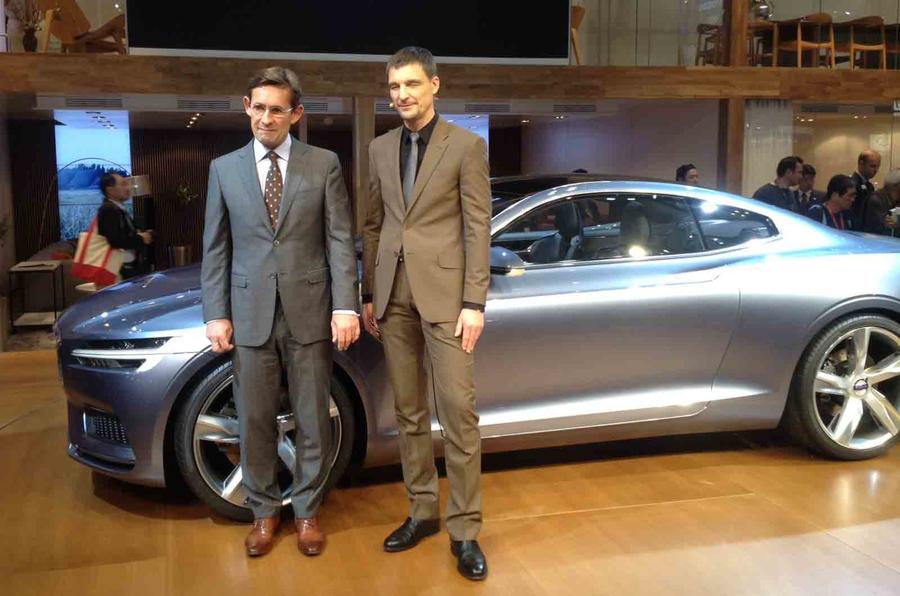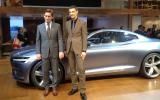The first Volvo to be penned by design chief Thomas Ingenlath, who arrived at the firm last year has again been seen at the Tokyo motor show.
The Volvo Concept Coupe is underpinned by Volvo’s versatile new Scalable Product Architecture (SPA) platform, and powered by one of the firm’s new Drive-E four-cylinder petrol engines mated to a hybrid system for performance equivalent to a V8. The model has already been seen at the Frankfurt motor show.
The SPA will first appear on a production car next year with the all-new Volvo XC90. But Volvo has chosen to preview the architecture on a coupe to showcase its versatility, and how it has "liberated designers and engineers from the limitations of previous cross-brand platforms", a reference to Volvo’s current Ford-derived underpinnings.
"The Volvo Concept Coupe is no futuristic dream car," said Ingenlath. "It is designed to demonstrate the capability of our new architecture: the confident stance, the proportions and the most prominent design signatures.
"Even though the XC90 is an entirely different type of car, you will recognise the connection instantly when it is revealed next year."
The Concept Coupe previews Volvo’s new corporate front-end, complete with a slimmer ‘floating’ radiator grille and headlight design, the headlights featuring Volvo’s new T-shape LED daytime running lights.
"We are still working with the final interpretation of the grille and the iron mark and this will be revealed together with the XC90 next year," said Ingenlath.
The sleek two-door coupe also features subtle nods to Volvo’s iconic P1800 coupe, without descending into being retro, according to Ingenlath.
Volvo’s new interior design is also featured on the concept, including a large touchscreen in the centre console, head-up display and handcrafted leather, wood and glass trim.
The SPA is also compatible with autonomous driving features, some of which will be introduced with the XC90 next year including a system that automatically steers to avoid accidents.
"There is a natural integration of user interfaces in our new car generation," said Ingenlath. "Interaction with pleasure but without distraction is the key. We bring connectivity to our cars and make them both more enjoyable and safe."
Power for the concept comes from a new turbocharged and supercharged 2.0-litre four-cylinder petrol engine from Volvo’s new Drive-E engine to family to power the front wheels, and an electric motor and battery pack to power the rear wheels.























































Join the debate
Add your comment
Great design
Stylish, simple, elegant. Mercedes and BMW could take more than a note from Volvo's new design direction. When you see Mercedes and BMW from the 60s, 70s and 80s, they are such classy looking cars, even today. Simple lines, great proportions. The W124 is probably one of the best looking and timeless 4 door saloons ever created, likewise Bangle's 5 series. It is good to see Volvo moving away from the heavy swage line of the last few models that Skoda copied. Here's to a bright and beautiful future for the firm.
Volvo Logo
A great design, although the Coupe style is so 60s, I would love to see it as a hatchback.
The Volvo logo is really over the top and should be redesigned, the diagonal flash in the grill is enough to recognise this as a Volvo, the Iron logo is very old style and the VOLVO name within the Iron logo is not needed, actually when you look at this the whole radiator grille is a VOLVO logo. I like to see a symmetric VOLVO logo like Toyota, Mercedes, Audi and others ...
Iron logo
Why is it called 'Iron logo'?
Jinx59 wrote: Why is it
From the very outset, the Volvo grille featured a symbol, a ring with an arrow pointing offset to the top right. This is one of Man’s oldest ideograms, which in the Roman Empire was used to signify the planet, Mars. In Sweden this symbol has been used from time immemorial to signify iron processing, and when Volvo was founded Swedish iron was widely regarded as far superior to that produced by other countries – it radiated strength and dependability. The company’s founders wanted to highlight this and in their marketing material wrote about ‘the Swedish car’ made of ‘Swedish iron’. The core value of quality was thus built into Volvo’s vehicles right from the very start.
Very nice
They've done a very good job but that badge does not go with the car or maybe i'm just being picky.